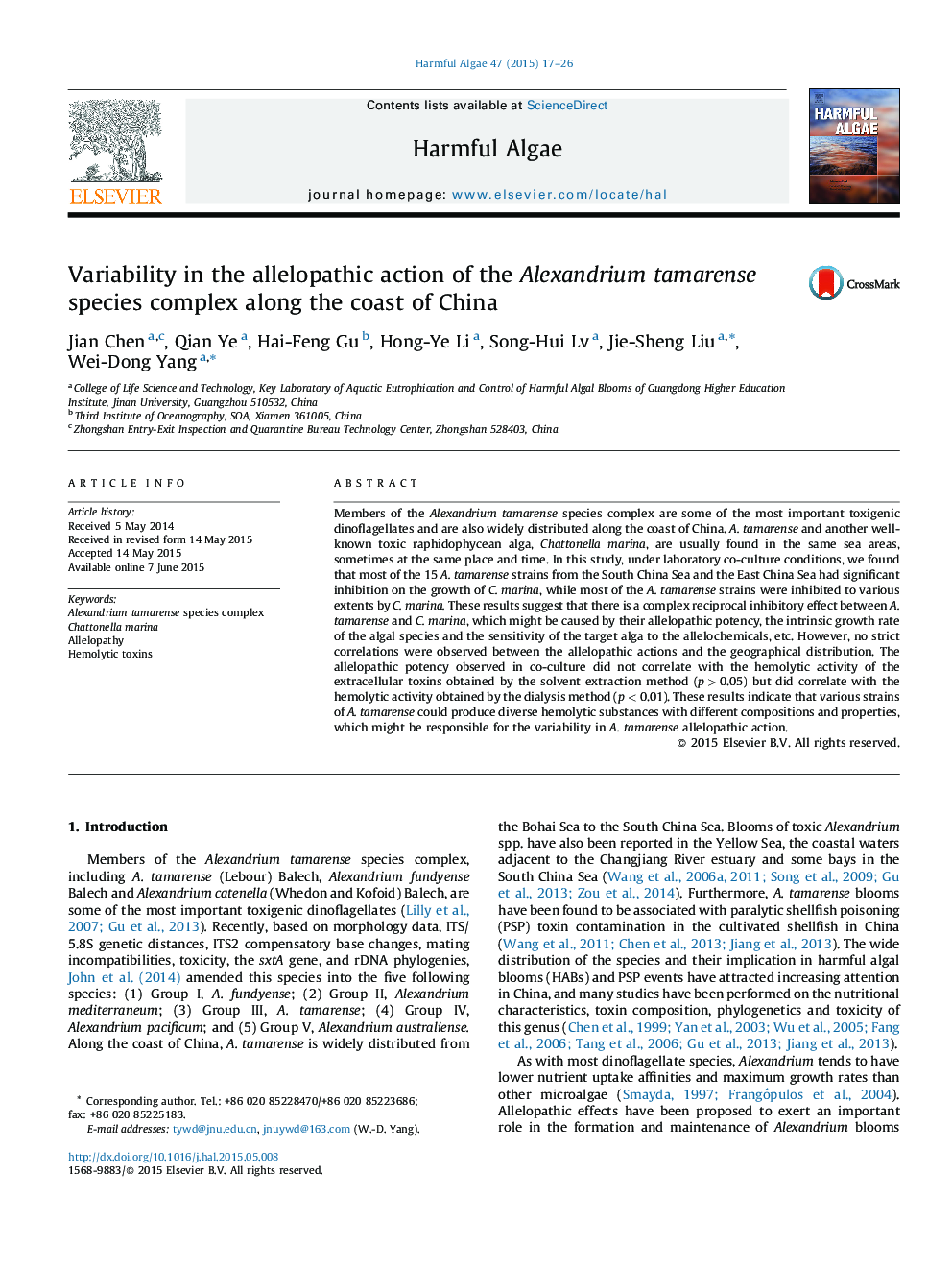| Article ID | Journal | Published Year | Pages | File Type |
|---|---|---|---|---|
| 6386176 | Harmful Algae | 2015 | 10 Pages |
â¢The allelopathic potency varies considerably among different A. tamarense strains.â¢A. tamarense strains display different responses to co-culturing with C. marina.â¢Various strains of A. tamarense may produce different hemolytic substances.â¢Some extracellular hemolytic substances may be allelochemicals in A. tamarense.â¢There is a complex reciprocal inhibitory effect between A. tamarense and C. marina.
Members of the Alexandrium tamarense species complex are some of the most important toxigenic dinoflagellates and are also widely distributed along the coast of China. A. tamarense and another well-known toxic raphidophycean alga, Chattonella marina, are usually found in the same sea areas, sometimes at the same place and time. In this study, under laboratory co-culture conditions, we found that most of the 15 A. tamarense strains from the South China Sea and the East China Sea had significant inhibition on the growth of C. marina, while most of the A. tamarense strains were inhibited to various extents by C. marina. These results suggest that there is a complex reciprocal inhibitory effect between A. tamarense and C. marina, which might be caused by their allelopathic potency, the intrinsic growth rate of the algal species and the sensitivity of the target alga to the allelochemicals, etc. However, no strict correlations were observed between the allelopathic actions and the geographical distribution. The allelopathic potency observed in co-culture did not correlate with the hemolytic activity of the extracellular toxins obtained by the solvent extraction method (p > 0.05) but did correlate with the hemolytic activity obtained by the dialysis method (p < 0.01). These results indicate that various strains of A. tamarense could produce diverse hemolytic substances with different compositions and properties, which might be responsible for the variability in A. tamarense allelopathic action.
